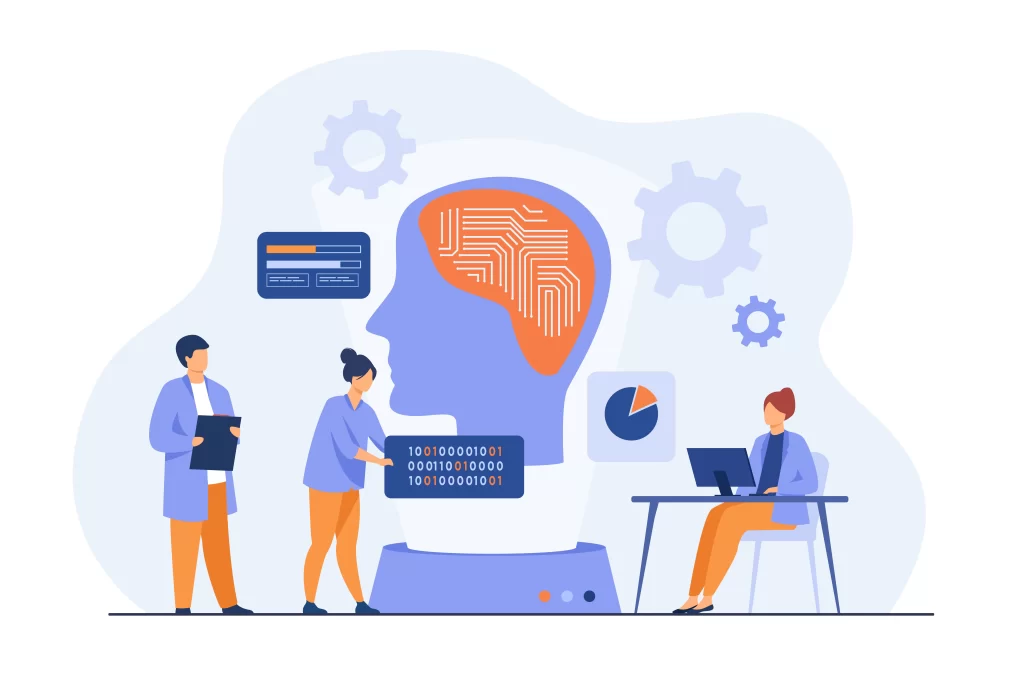- blog29
How Artificial Intelligence is Revolutionizing the Future of Intellectual Property

The legal, business, and creative sectors are just a few of the fields changing as artificial intelligence (AI) technology advances. Intellectual property (IP) is one area where its impact is most noticeable. The constantly evolving landscape of AI systems’ content creation, innovation, and modification presents distinct problems for established intellectual property rights (IPR) frameworks. We will examine AI in the intellectual property landscape, including how regulations evolve and how creators navigate it. Tools like Dibs are starting to emerge as crucial resources.
Artificial Intelligence and Intellectual Property
Numerous facets of invention and creativity have changed due to artificial intelligence. These days, AI systems can create innovations, music, art, and content—sometimes with little human help. However, these developments also raise an important issue: how to determine the rightful owner of the intellectual property created by AI technology? Which party owns the rights—the AI, the AI’s creator, or the AI itself? Traditional intellectual property rights frameworks based on human creativity do not sufficiently consider AI-generated works. This has led to a reevaluation of ownership and the notion of creativity.
The implications of this development for trademarks, patents, and copyrights are likewise very serious. For example, is it possible to copyright an AI-generated painting, and who owns an innovation created by an AI without human input? These queries emphasize how urgently intellectual property law needs to change to keep up with the quickly developing field of artificial intelligence.
Protecting Rights in the AI Era
The intricacy of safeguarding intellectual property rights has increased with the integration of AI into creative processes. Because AI systems can analyze and replicate existing works, there are worries about copyright infringement and plagiarism. Because of this difficulty, businesses and content creators must reconsider how they protect their work in a world where artificial intelligence (AI) may quickly replicate content.
Trademarks and patents, two common forms of intellectual property security, are not working well in this situation. While copyrights and trademarks are frequently regarded as the gold standards for intellectual property protection, they have several drawbacks. Creators who prefer to concentrate on their craft might be especially troublesome due to the long approval procedure and the financial cost of applying. Furthermore, a more flexible approach to IP protection is needed, given the growing influence of AI in the creative process. This is when services such as Dibs become useful.
How AI is Changing Intellectual Property Law
The existing intellectual property law frameworks are being challenged by AI technology. IPR regulations were first created with human creators in mind. But now that AI systems can produce original works, there are legal concerns regarding the creation, usage, and ownership. The following significant areas of IP law are impacted:
- Copyright Law: It’s still unclear who is entitled to the copyright on material produced by artificial intelligence. Around the world, courts and legal authorities are debating whether AI-generated works should be protected by copyright and, if so, who would be the legitimate owner.
- Patent Law: Due to AI-driven innovation, the number of patent applications for inventions produced by AI has increased. However, whether AI can be named an inventor on a patent is still debatable, particularly in light of the growing pressure on patent offices worldwide to alter their regulations.
- Trademark law: Artificial intelligence (AI) tools that evaluate and generate marketing content may unintentionally violate already-registered trademarks, raising questions concerning liability and responsibility.
As intellectual property law evolves, it must incorporate provisions addressing the novel challenges artificial intelligence systems present.
The Role of Dibs in Safeguarding Creators
In the AI era, Dibs emerges as a potent tool for artists among the complications of conventional intellectual property protection techniques. Without dealing with the red tape of filing for a formal patent or copyright, creators—writers, artists, photographers, or inventors—can instantly establish a claim on their creations thanks to Dibs.
Dibs makes IP protection easier by providing legal proof of ownership through certificates. Dibs offers a verified record demonstrating the work was claimed from the time of creation so creators can avoid drawn-out legal battles or disputes.
In AI, where intellectual property is more likely to be used without permission, dibs are extremely valuable. Through the expeditious, cost-effective, and easily attainable procedure of staking a claim, Dibs enables artists to retain authority over their intellectual property rights in situations where more conventional approaches could prove inadequate.
Future Trends in AI and Intellectual Property
Looking ahead, artificial intelligence will continue to push the boundaries of intellectual property. Here are some future trends to watch:
- AI-Driven IP Registration: AI will probably be a major factor in automating patent, trademark, and copyright registration. AI technology could expedite the application process, minimizing the chance of human error and shortening the time needed to obtain intellectual property rights.
- AI in IP Enforcement: AI technology may also assist in enforcing intellectual property rights by searching the Internet for copyright infringement, unlawful use of trademarks, or counterfeit goods.
- New Legal Definitions: As information created by AI proliferates, new legal interpretations of “ownership” and “authorship” might also surface. Legislators and courts could have to reinterpret important IPR framework ideas to allow for AI-driven creativity.
- Cross-Border IP Harmonization: Since artificial intelligence is a worldwide phenomenon, there might be a greater drive to harmonize national IP rules. International treaties and accords could be reviewed to provide uniform guidelines for intellectual property and AI matters.
Summing up
Unquestionably, artificial intelligence will influence intellectual property in the future. AI technology offers creators and legal experts options and difficulties as it develops. Particularly when it comes to matters like ownership and infringement, the current IPR framework is finding it difficult to keep up with the rapid advances in artificial intelligence.
On the other hand, streamlined solutions like Dibs give creators a quick and easy means to assert their rights. Dibs protects intellectual property so you can concentrate on your creative work, whether an inventor, writer, or artist. How rapidly legal systems adjust to the power of AI will determine the future of intellectual property and technologies like Dibs will be crucial in bridging that divide.
